How Trump uses Reagan’s playbook on the White House lawn
- Published
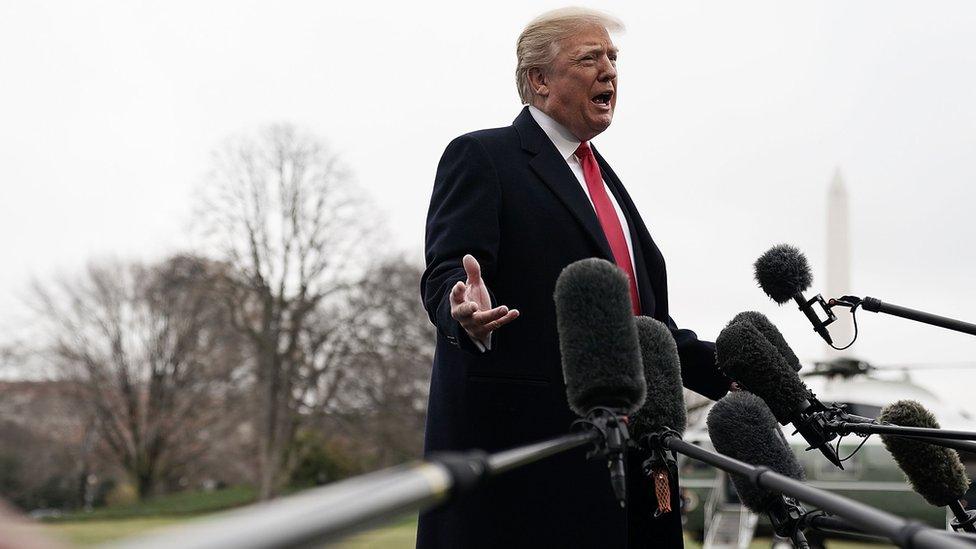
US President Donald Trump uses the south lawn of the White House to exert his authority and diminish the media. Here's how he does it.
On Friday the president spoke on the grass before leaving for a conservative conference, talking to reporters about gun control and school safety.
"The NRA wants to do the right thing," he said, referring to the US' largest gun lobby, the National Rifle Association, while Marine One, the presidential helicopter, waited on the grass to his left.
About 40-50 journalists stood behind a heavy metal chain, some taking photos, while he spoke for several minutes. It was a drizzly day, and the air smelled of diesel.
Trump's predecessors - from Dwight D Eisenhower to Barack Obama - were also photographed on the lawn. But not nearly as often or with the attention to detail that Trump and another Republican president, Ronald Reagan, have applied.
Trump has spoken to journalists more than a dozen times while on the lawn near Marine One, according to CBS News' Mark Knoller, external. Like Reagan, Trump takes advantage of the august setting.
In the late 1980s, conversations with reporters on the south lawn were "the primary way that Mr Reagan communicates with the press corps," wrote, external journalist Steven Roberts.

Reagan often spoke to reporters on the lawn and pretended not to hear tough questions
In a similar way, Trump has chosen the lawn over the formal setting of a press conference to deliver messages. "Whether or not he's consciously imitating Mr Reagan, I think in point of fact he's done just exactly that," said the Heritage Foundation's Lee Edwards. "That's made his message more powerful."
Here's a look at how communications strategy is embodied in the south lawn.
The president can show off trappings of the office
With the Washington monument in the background, Marine One looks impressive. "It's a sign of the power and majesty of the office," said Matt Mackowiak, who was an advance man for the George W Bush White House, describing the presidential helicopter.
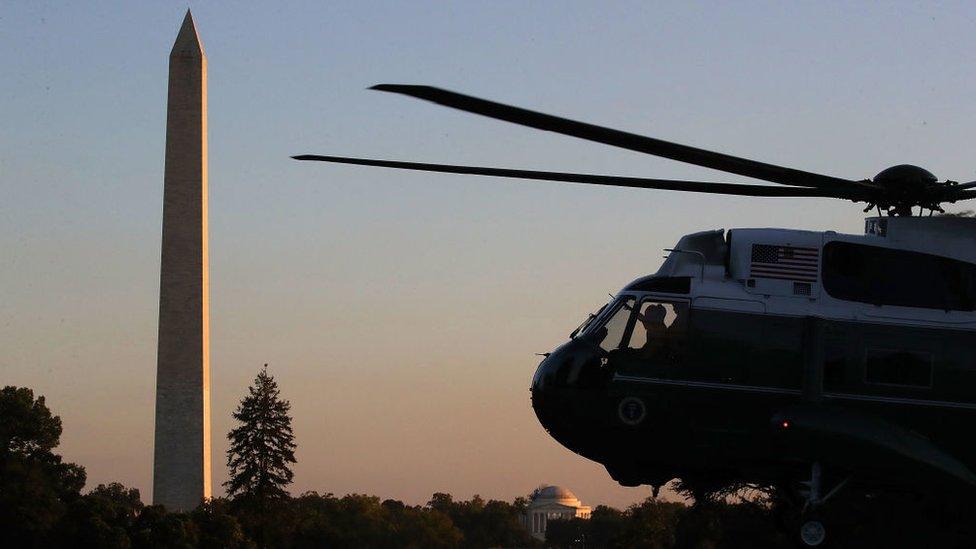
That backdrop was even more striking - and for some, jarring - when Trump spoke approvingly Roy Moore, a Senate candidate who'd been accused of sexually assaulting teenagers, on the lawn.
The president can control access
As the president knows, the lawn offers a convenient way to cordon off reporters.
When Trump's in a bad mood, he takes to Twitter and avoids journalists. During his first year as president, he held one solo press conference. This was far fewer than his predecessors.
Presidents have held an average of 11 solo press conferences each year since the Nixon administration, according to the American Presidency Project, external.
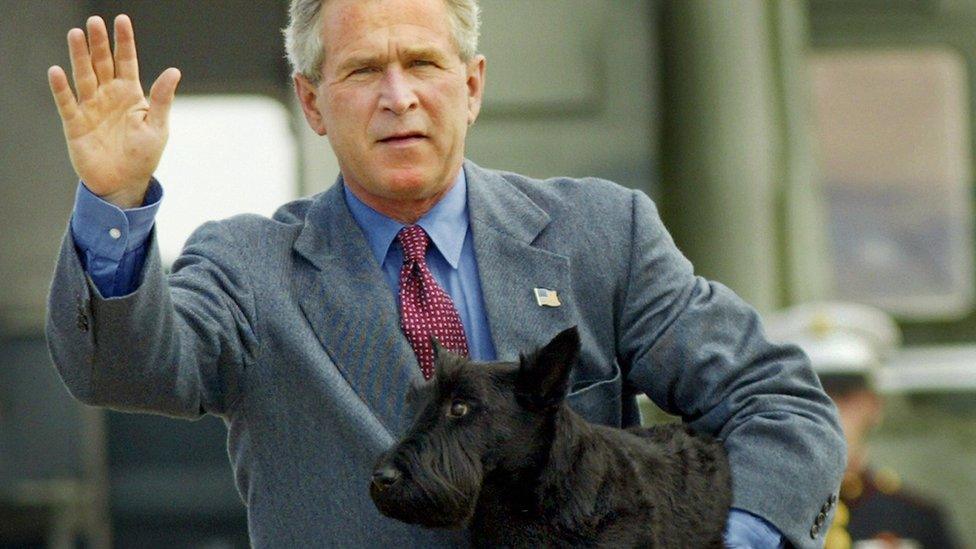
Reporters used to call out to Barney, a Scottish terrier, as a way to lure the president over
Still Trump chats with reporters on the lawn - at least when he's feeling upbeat.
"The market is good," he told journalists in early January. "The jobs reports were very good."
He can diminish the media
When he stops to talk, there's often chaos. Reporters squabble for a place at the chain and look "animalistic", says University of Virginia's Larry Sabato, describing them (accurately) as "desperate to get the president's attention".
The president shows reporters - and his constituency - he's in charge.
"He kind of sees the trappings of the presidency as in a way to reaffirm his core message to his base," said Matthew Dallek, the author of The Right Moment: Ronald Reagan's First Victory.
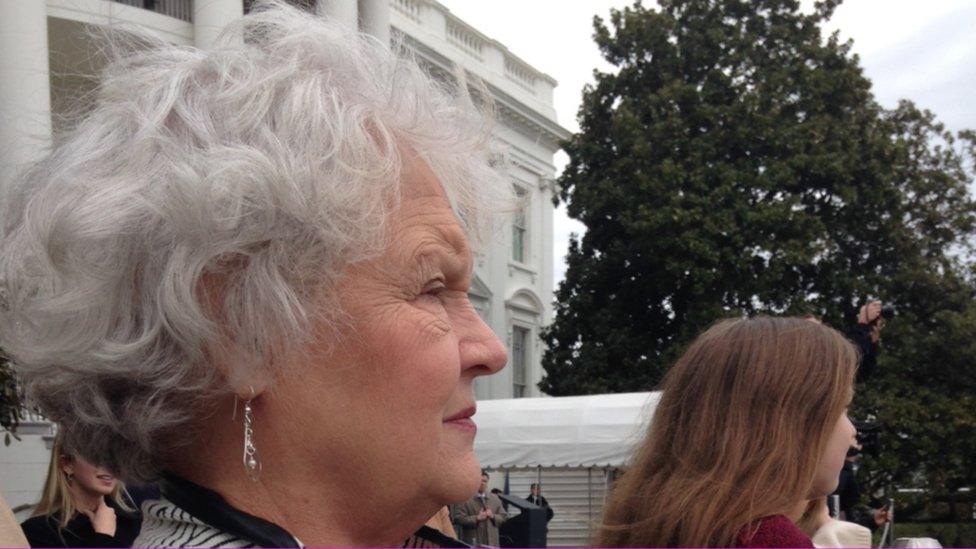
Lynn Neviaser, a Trump supporter, said he looked impressive on the lawn
One of the president's admirers, Lynn Neviaser of Culpepper, Virginia, was visiting a friend at the White House recently. She watched the president walk across the south lawn. "He's so tall," she said.
The president can deliver a message without having to explain
During the second Bush administration pilots received instructions beforehand from an official at the White House if the president was going to speak to reporters on the lawn.
"They'd say - 'Hey, Boss is going to make some remarks, and we'd like it to be quiet,'" said Matt Howard, a former Marine One pilot.
In contrast, Trump talks above the helicopter's roar.
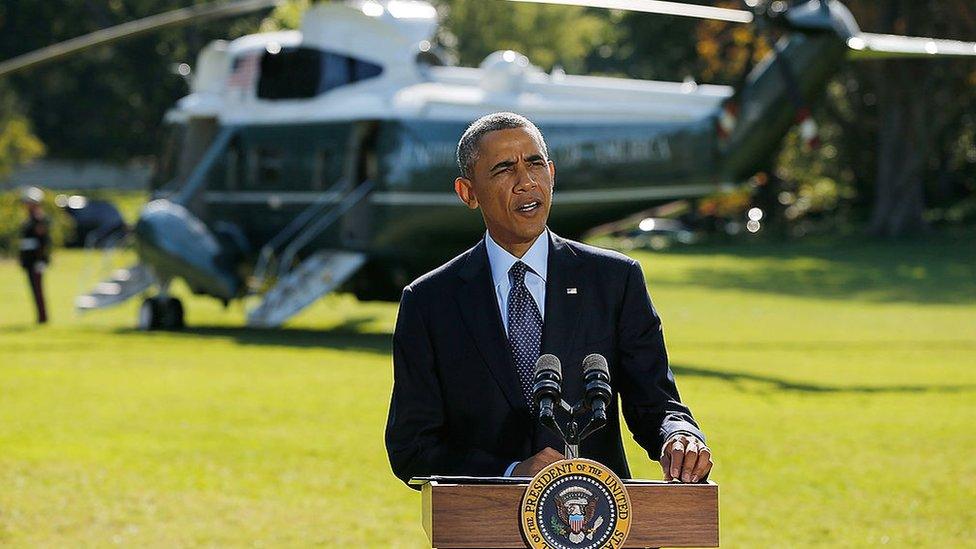
Obama uses a microphone to deliver a statement before boarding Marine One in 2014
Once he walked across the lawn, and he appeared to say something. Reporters held out their microphones to pick up the sound, but there was none. Several people said on the lawn said they realised later he didn't actually speak - he just mouthed words.
Trump is following in the tradition of Reagan, who also used the engine's roar to his advantage.
Francis Buckley, a senior editor at the American Spectator, said Reagan had an "endearing-slash-infuriating" habit of cupping his ear when a reporter shouted a tough question - as if to say: "What was that again?" Then he'd refuse to answer.
"Reagan had a kind of personal self-discipline," said HW Brands, the author of Reagan: The Life, explaining he would avoid lengthy discussions about sensitive topics with reporters. "Trump will just blurt out something."
In this way, said Dallek, the two presidents were profoundly different, whether on the lawn or elsewhere. Reagan would "comport with the dignity of the office. Whereas with Trump it's really more the opposite".
Follow @Tara_Mckelvey, external